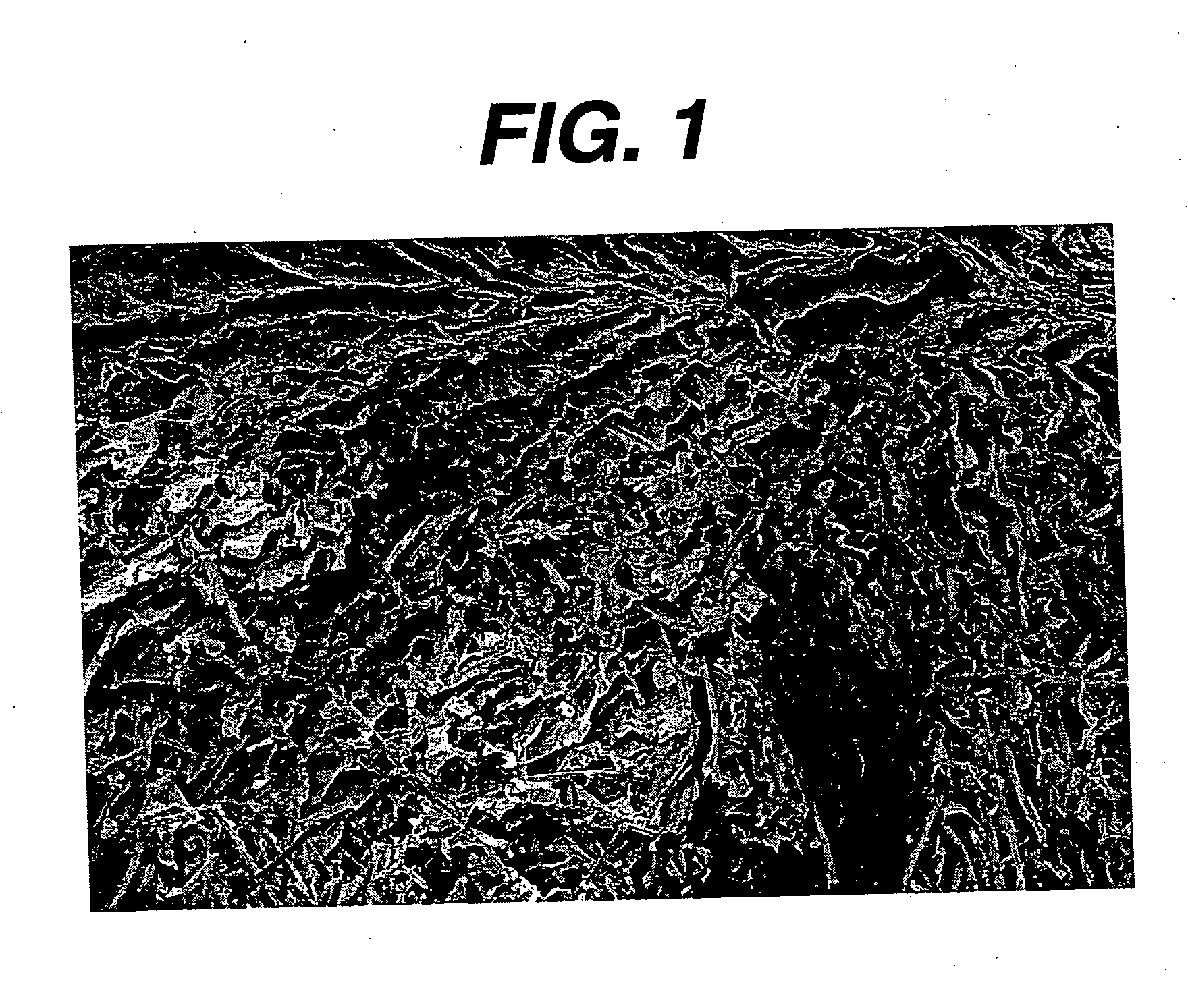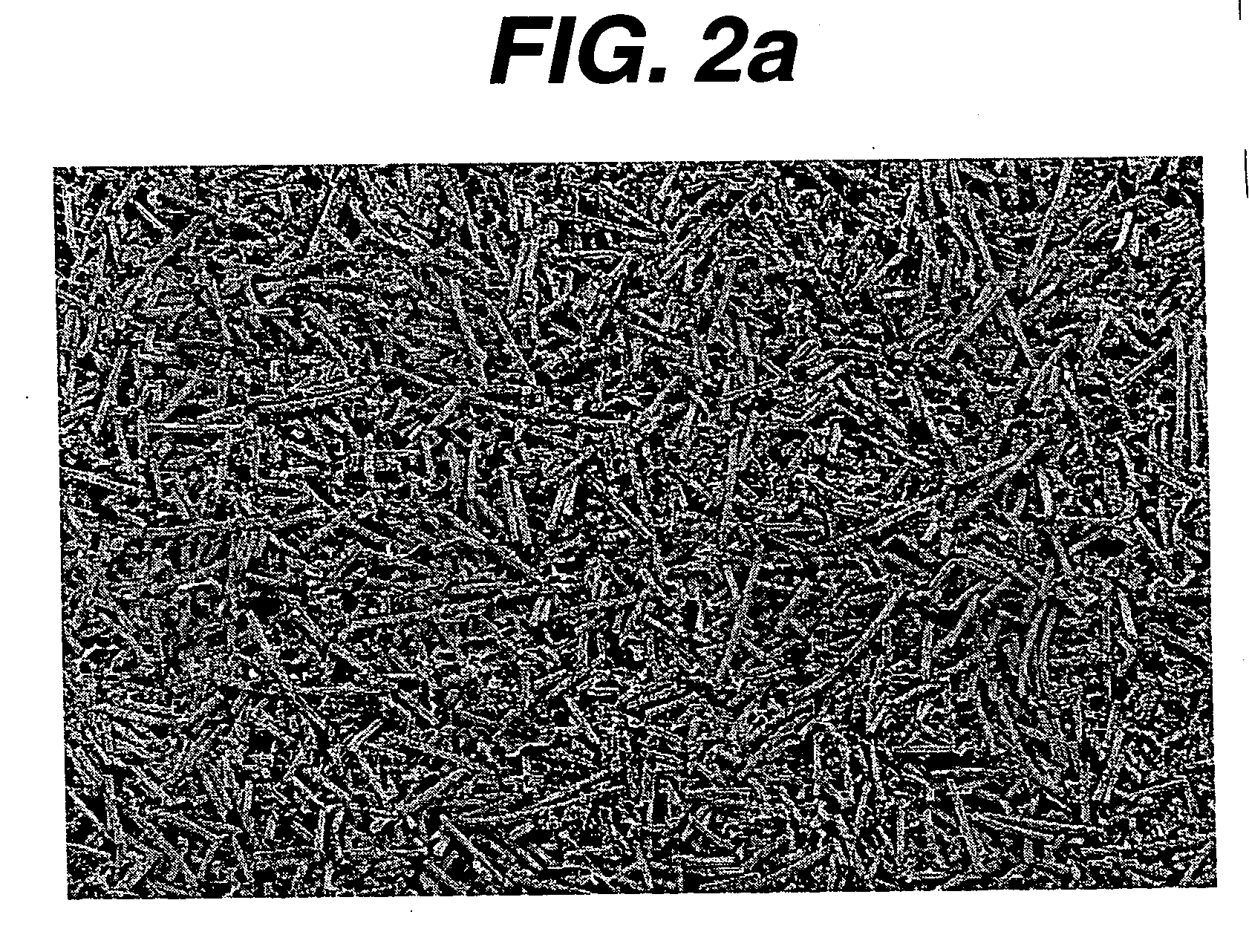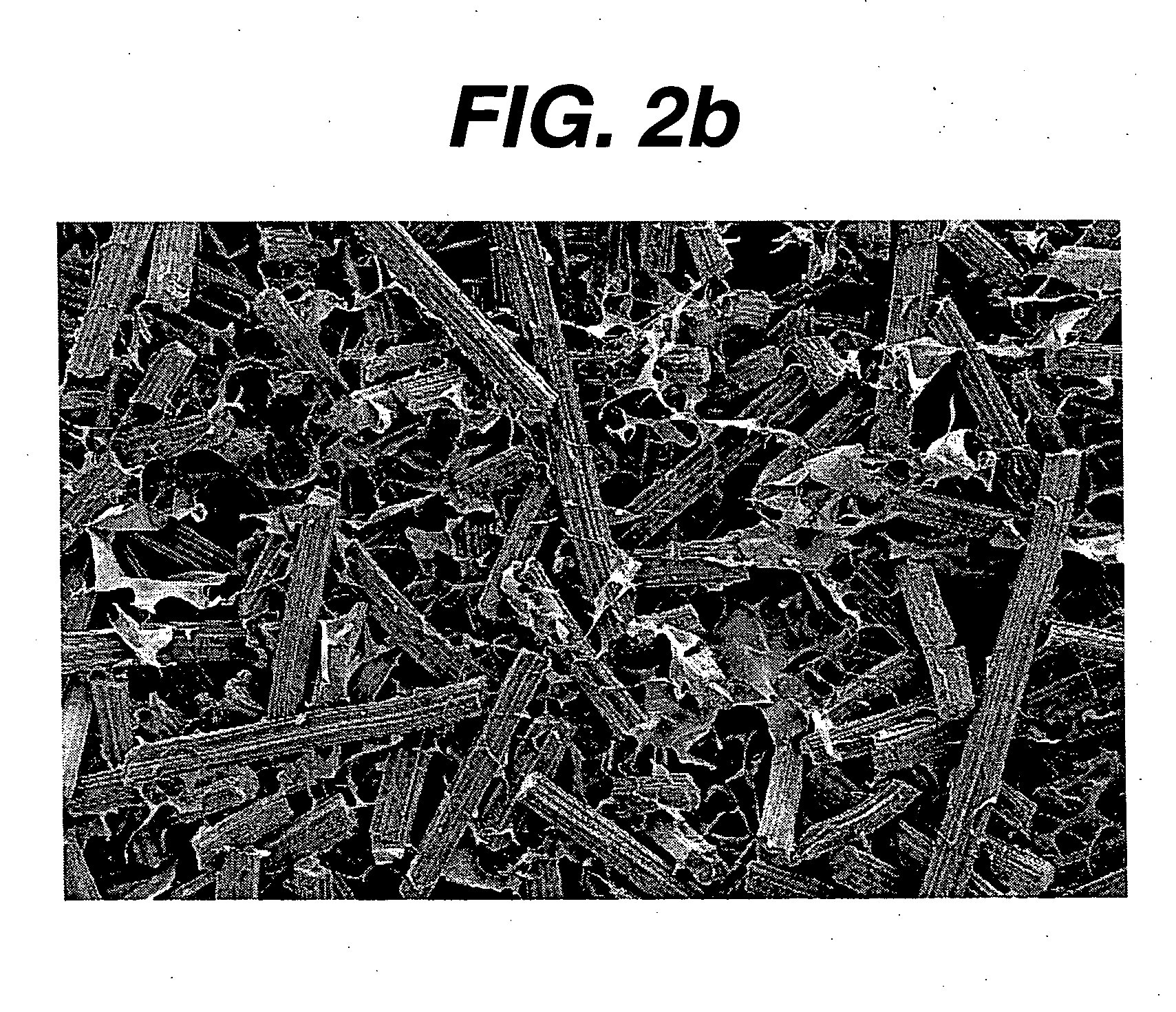Hemostatic devices and methods of making same
a technology of hemostatic devices and cellulose, which is applied in the direction of bandages, drug compositions, extracellular fluid disorder, etc., can solve the problems of not being effective in providing and maintaining hemostasis, relatively high volume of blood loss, and using carboxylic-oxidized cellulose as a carrier
- Summary
- Abstract
- Description
- Claims
- Application Information
AI Technical Summary
Benefits of technology
Problems solved by technology
Method used
Image
Examples
example 1a
Chopped CORC Fabric / Na—CMC Porous Patch (10 / 40) Preparation
[0066] One gram of sodium salt of CMC (Na—CMC, from Aqualon® 7M8SF) was dissolved in 99 grams of deionized water. After complete dissolution of the polymer, 15 grams of the Na—CMC solution was transferred into a crystallization dish with a diameter of 10 cm. A piece of Surgicel Nu-Knit® fabric with a diameter of 9.8 cm (about 1.3 gram) was chopped with a Thomas-Wiley® Laboratory Mill, Intermediate Model cutting blade then passed through a USA standard Testing Sieve (mesh size=10, A.S.T.M.E.-11 Specification) to yield fibers with an average designated nominal particle size of 1.7 mm. The chopped fabric was placed in the CMC—Na solution in the crystallization dish. The suspension of the chopped fabric in CMC—Na solution was placed in an Ultra-TURRAX® T18 DIXI midi Dispersers / Homogenizers homogenizer and homogenized for less than 5 min until the loose chopped fabric is evenly distributed in the solution. The homogeneous soluti...
example 1b
Chopped CORC Fabric / Na—CMC Porous Patch (20 / 40) Preparation
[0067] One gram of sodium salt of CMC (Na—CMC, from Aqualon® 7M8SF) was dissolved in 99 grams of deionized water. After complete dissolution of the polymer, 15 grams of the Na—CMC solution was transferred into a crystallization dish with a diameter of 10 cm. A piece of Surgicel Nu-Knit® fabric with a diameter of 9.8 cm (about 1.3 gram) was chopped with an Thomas-Wiley® Laboratory Mill, Intermediate Model cutting blade then passed through a USA standard Testing Sieve (mesh size=20, A.S.T.M.E.-11 Specification) to yield fibers with an average designated nominal particle size of 0.85 mm. The chopped fabric was placed in the CMC—Na solution in the crystallization dish. The suspension of the chopped fabric in CMC—Na solution was placed in an Ultra-TURRAX® T18 DIXI midi Dispersers / Homogenizers homogenizer and homogenized for less than 5 min until the loose chopped fabric is evenly distributed in the solution. The homogeneous solu...
example 1c
Chopped CORC Fabric / Na—CMC Porous Patch (40 / 40) Preparation
[0068] One gram of sodium salt of CMC (Na—CMC, from Aqualon® 7M8SF) was dissolved in 99 grams of deionized water. After complete dissolution of the polymer, 15 grams of the Na—CMC solution was transferred into a crystallization dish with a diameter of 10 cm. A piece of Surgicel Nu-Knit® fabric with a diameter of 9.8 cm (about 1.3 gram) was chopped with an Thomas-Wiley® Laboratory Mill, Intermediate Model cutting blade then passed through a USA standard Testing Sieve (mesh size=40, A.S.T.M.E.-11 Specification) to yield fibers with an average designated nominal particle size of 0.43 mm. The chopped fabric was placed in the CMC solution in the crystallization dish. The suspension of the chopped fabric in CMC—Na solution was placed in an Ultra-TURRAX® T18 DIXI midi Dispersers / Homogenizers homogenizer and homogenized for less than 5 min until the loose chopped fabric is evenly distributed in the solution. The homogeneous solutio...
PUM
| Property | Measurement | Unit |
|---|---|---|
| size | aaaaa | aaaaa |
| dry weight | aaaaa | aaaaa |
| thickness | aaaaa | aaaaa |
Abstract
Description
Claims
Application Information
 Login to View More
Login to View More - R&D
- Intellectual Property
- Life Sciences
- Materials
- Tech Scout
- Unparalleled Data Quality
- Higher Quality Content
- 60% Fewer Hallucinations
Browse by: Latest US Patents, China's latest patents, Technical Efficacy Thesaurus, Application Domain, Technology Topic, Popular Technical Reports.
© 2025 PatSnap. All rights reserved.Legal|Privacy policy|Modern Slavery Act Transparency Statement|Sitemap|About US| Contact US: help@patsnap.com



